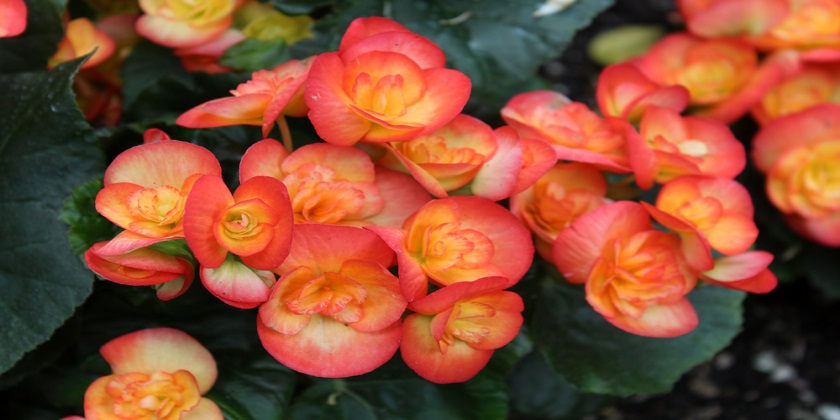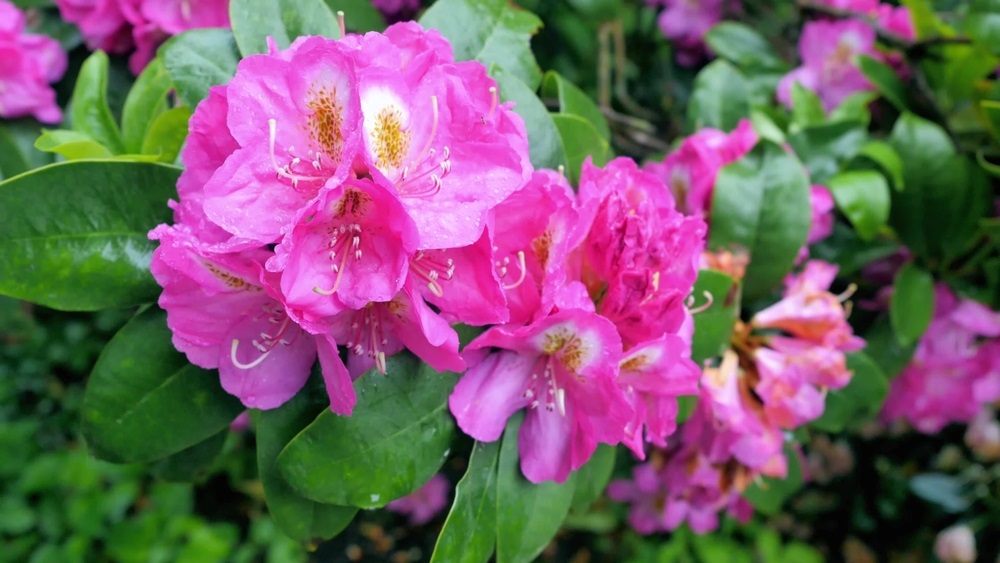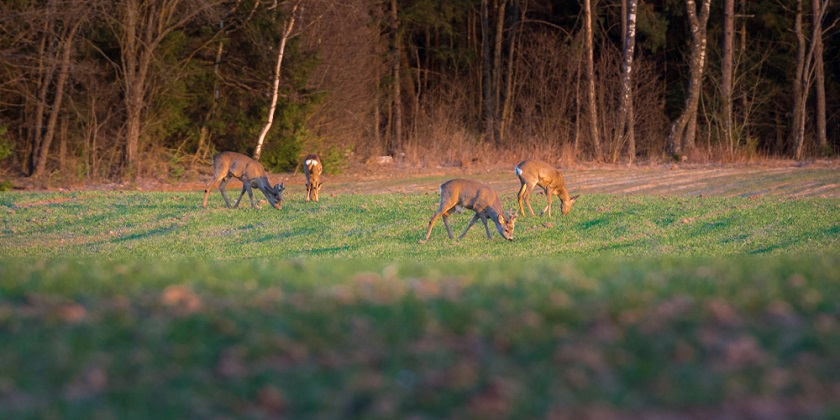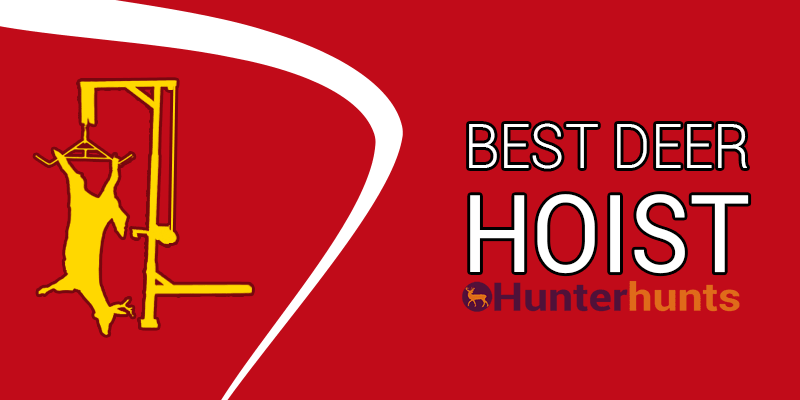Many people wonder and ask do deer eat flowers? Well, I have decided to clear all of your doubts about what deer eat like to eat. This post is mainly focused on deer behavior about eating various flowers.
Let us start by saying, deer are herbivores and forage for a large variety of vegetables, and plant matter, as well as trees, shrubs, grasses, decorative plants, and garden plants. Apart from this, deer love to eat fruits, especially the sweater ones.

They are lovely animals that we like to see in their natural grassland and mountain environments, no doubt concerning it.
Related Post:- Best Rifle Scope For Deer Hunting
In this article, I have mentioned the various flowers that deer may eat and avoid eating. If you love gardening, and your property is surrounded by a huge number of deer and other ruminants, then this content is going to be very helpful for you.
Do Deer Eat Roses?
Deer feed a large variety of flowers. But do deer eat flowers like roses?..yes they do. Deer loves to eat roses as they are herbivorous.

Despite Knock Out rose plants having thorns, deer won’t hesitate to eat them. Once a deer eats a rose bush, it’s going to take the plant all the way to the bottom. The rose bush seems to have had a severe pruning once a deer grazed it.
Deer typically do their browsing damage in the dark. Sometimes you’ll see deer uptake roses throughout the day. According to revealed data, every deer grub, on average, five to fifteen pounds of material taken from shrubs and trees daily.
Once we contemplate that deer usually live and stick in herds. They’ll do an astounding quantity of harm to our gardens, roses enclosed, during a short quantity of your time.
Do Deer Eat Sunflowers?
If you think you are going to use sunflowers as a deer repellent, this plan definitely flops. The bad news is, that deer will not avoid eating sunflowers in your garden.

Deer are always hungry creatures and their diet consists of so many plants and flowers. The sunflower attracts deer. You can grow beautiful sunflowers in your yard, they grow 2 to 3 feet tall and look attractive to deer.
Sunflowers are often a healthy addition to deer feed; however, it should not be the sole factor you place out for wild deer to eat. Flower seeds give several identical nutrients to acorns and alternative nuts that deer eat in the wild.
Flower seeds contain oil and fat that facilitate keeping the ruminant heat within the winter months. Sunflower seeds are also beneficial and high in fiber. Other nutrients that are found in sunflower: are zinc, thiamin, choline, biotin, and vitamin E.
Do Deer Eat Flowers Like Marigolds?
Deer are destroyers. You may think that you will use marigold plants as a deer repellent but they are hungry always. The marigold is not a deer repellent. Deer do eat marigolds.

There’s no guarantee that deer will stand back from your garden plants simply because marigolds keep guard.
Deer can eat nearly something if hungry enough, particularly in spring once new growth initially appears. Still, a border of marigolds or rows placed between plantings is usually enough to discourage the cervid from stepping forward to analyze the foliage on the far side. The garden flowers normally referred to as marigolds comprise the genus Tagetes, which has quite fifty species.
These sun-loving members of the flower family occur naturally in South America and a few components of North America and are cultivated as annuals in most of us. With deadheading, these compact plants can bloom endlessly all summer.
Another advantage of growing marigolds is that they need an intense scent and that they unharness a chemical that protects them from certain predatory insects and animals.
Prevent Deer From Eating Marigolds.
If deer are feeding simply on the blooms from a plant but not the leaves, spray-on repellants work nicely. Tagawa Gardens sells many smart odor repellants (Bobbex, Messina, Liquid Fence & hot pepper wax). If doable, spray the rear of the bloom or simply below the bloom thus you don’t repel the pollinators. Use organic fertilizers.
Artificial fertilizers could cause fast growth. If you are wondering about doing deer eat flowers then the answer is yes!… That new growth is tender & tasty and they will eat them all.
Several plants coming back from nurseries are also ingested initially, however, they eventually are left alone if inseminated organically. Putting items of meshwork flat on the bottom close to a plant can spook deer (or any mammal). Once the cervid treads on the wire, it shakes and spooks them.
Don’t forget to choose the meshwork before mowing the grass. sure plants appear to be cervid magnets. Forget growing tulips (try daffodils), roses, vegetables, or poplar trees unless you place them in a very enclosed space. Take into account native plants.
Several are pungent and have been tailored to deer and alternative life. A buck will jump a 6’ fence. Thus a deer fence may have to be up to 8’ tall. Deer won’t jump a fence if they can’t see what’s on the opposite facet or perhaps if there’s an area to land. Thus a 6’ privacy fence may fit.
Do Deer Eat Petunias?
Deer consume petunias fairly frequently, deer can eat almost any plant if they’re hungry enough. You might be asking yourself Why do deer eat flowers like Petunias?… However certain plants are in additional danger than others. Petunias aren’t deer’s favorite plants, however, they’re sometimes or oftentimes broken if deer visit the yard.

Deer-like plants with young, succulent growth and petunias work that description nicely as they grow and flower from mid-spring till frost.
If you’ve got issues with deer and you are growing petunias, you will need to supply some protection to reduce injury to the plants.
One of the only ways to reduce the quantity of damage to petunias is by planting them close to the house. If that does not work, planting behind a deer-proof fence may be a reliable resolution. For a lot of exposed locations, you’ll be able to use repellents to assist in keeping deer away.
Do Deer Eat Begonias?
Deer generally do not attract begonias but it doesn’t mean they will not eat it. White-tailed deer vary in size, with specimens turning larger the farther they’re from the equator.

North American stags can reach three hundred pounds or a lot, whereas North American females will approach two hundred pounds.
The specialized abdomen of the deer permits it to eat an expansive array of plants and plant materials. Deer are overpopulated in components of North America because of a pronounced decrease or absence of natural predators. Deer have voracious appetites and don’t forever differentiate between nature’s cabinet and your cartilage garden.
A deer-resistant fence will keep Bambi and friends out of your vegetable plot, however, fencing around the decorative plants and flowers in your landscape isn’t forever a practical choice.
If you’re involved in hungry deer that could lay waste in your yard, take into account planting ornamentals that consultants have judged to be deer-resistant, like begonias. Begonias area unit is tasteless to a ruminant, however quite popular among gardeners.
Do Deer Eat Rhododendrons?
White-tailed deer are strictly planted eaters. Simply because a plant is toxic to humans does not imply it is toxic to deer. If you are wondering, do deer eat flowers like rhododendrons, then I’ll say yes. Deer eat tons of plants that might be thought-about a minimum of indigestible, if not outright deadly to humans.

A rhododendron hybridizer, his goal is to make a rhododendron with orange or yellow blossoms that are hardy enough to survive powerful winters. PJM is the sole kind of rhododendron that cervid appears to depart alone. The fence permits him to grow his deer-delectable seedlings in a land setting adjacent to the mountaintop forest.
Deer can eat the leaves off of most azaleas and a few scabrous rhododendrons however typically won’t eat the larger leafy rhododendrons. Within the fall, however, male cervids can discover many mature rhododendrons and attack them with their horns.
They’re going to continue this attack till there’s nothing left however many bare stubs. Some specialists say the cervid tries to rub the velvet off its horns.
If you have got rhododendrons in your garden, and deer within the neighborhood, you most likely even have a 5-foot browse line, with inexperienced leaves on top and brown branches below. Deer love rhododendrons, particularly in winter.
Related Post:- 5 Best Deer Hunting Knife: Review and Buying Guide
Do Deer Eat Azaleas?
Deer doesn’t seem to be progressing to stop the consumption of Azaleas. Azaleas are fascinating for their bright spring blooms, vibrant fall foliage, and simple care.

Sadly, the shrubs are as fascinating to deer as they are to humans. Though there are several deer-resistant flowering shrubs, azaleas don’t seem to be one among them. Deer love narrow-leaf evergreens, particularly coniferous trees and fir.
Deer shows a preference for hostas, daylilies, and common ivy. The heaviest garden browsing is from Oct through February. Several growers note that deer appear to like plants that are impregnated.
Deer tend to remain far from daffodils, foxgloves, monkshood, and poppies. These are common flowers that have toxins that ruminants avoid. If you would like to grow azaleas and you have hungry deer within the space, opt for a smaller, dwarf selection, and grow it during an instrumentality.
The Kurume hybrids, like “Coral Bells” and “Pink Pearl,” square measure grew up in pots, notes the University of Missouri Extension. Place the instrumentality in a location close to the house or underneath a bright, motion-activated lightweight. Another choice is to surround your rhododendron or azaleas with a deer-resistant hedge, like a shrub hedge.
If your azaleas are broken by the cervid, you’ll generally nurse them back to health. 1st and most significantly, take away your rhododendron to a location where it will not be munched on by cervid or different animals. Prune off broken or broken branches. Then, dampen the soil around your rhododendron and surround it with a thick layer of mulch.
This may stifle weed growth and conserve nutrients within the soil; nutrients your plant has to regain its health. If you employ wood mulch, pile it to a depth of two inches. Leaf mulches ought to be four to six inches deep. Within the spring, fertilize your rhododendron with a 6-10-4 formula or rummage around for a chemical that’s designed for flowering shrubs.
Do Deer Eat Pansies?
You might have a question, do deer eat flowers of pansies?… If you have got planted pansies or violas for winter color watch out for deer uptake them. These stunning annuals manufacture flowers that are edible and deer like to eat them.

There’s no supernatural answer however here’s a touch tip that will facilitate. Deer, like several alternative animals, hates the smell of cayenne pepper.
Spray Hot Pepper Wax in and around your pansies or violas and once the deer move in to eat them, the smell of the pepper can make them flip their noses and go elsewhere for a snack. Apply multiple times, following the labeled directions, to keep the scent active. When several try to eat the plants, deer typically decide to not come.
The most effective thanks to keep deer removed from your pansies is to fence off your yard and garden. Erect 8- to 11-foot fences around your yard to forestall the cervid from jumping over them. A choice is to plant deer-resistant plants around your pansies.
Whereas no plant is safe from a deer, those with thorns, bushy leaves, or a pungent odor, like herbs, are less fascinating than pansies or fruit-bearing plants. Before the cervid in your landscape becomes a nuisance in your garden, learn what plants they like to eat and which of them they do not. though no plant is one hundred pc deer-proof, some are tastier than others and so additional vulnerable to injury.
Do Deer Eat Mums?
Deer Avoid eating mums. The answer to your curiosity of knowing about do deer eat mums is an absolute yes. This plant can be used as a deer-resistant plant as a result of the flowers of this plant turning out a robust odor.

The smell of this plant avoids the entry of predators like deer, rabbits, etc. Deer usually depend upon inexperienced plants throughout the spring and therefore the summer season; once in search of food, they reach the home gardens.
To avoid this, mums have got to be planted within the open space on the edges of the garden. Plant these guys within the spring to permit their roots to determine, cut them back in a Gregorian calendar month to keep them from obtaining leggy, and revel in within the fall. Cutting mums also are wonderful cut flowers and keep for a protracted time once clipped and brought within.
Mums (Chrysanthemum spp.) are among the foremost versatile flowers you’ll augment your garden. The many species and cultivars embrace flowers of various colors and shapes, together with blooms formed like balls, ancient single-petal flowers, and a few that give spiders. If ruminants or rabbits tramp through your yard, however, you would possibly favor planting your mums out of reach of those hungry animals.
Mums are somewhat immune to deer and rabbits, which tend to avoid plants that have odoriferous leaves or a fuzzy texture — each gift on many types of mums. No plant is entirely deer-resistant, however, per Rutgers University Cooperative Extension. Some chrysanthemums have stems and leaves that are toxic to rabbits, though that most likely will not stop them from nibbling on the tender flowers.
Do Deer Eat Hostas?
For deer, the genus Hosta plants are like candy. Some hostas are marketed as containing a degree of ruminant resistance, however like all deer-resistant plants, once these critters are hungry enough, they’ll eat something. Thus no hosta is safe. Your best bet is learning a way to keep the cervid far from hostas.

Before exploring a way to keep deer far from hostas, it’s necessary to be told a way to acknowledge the signs of deer banqueting. Once a Deer devours a genus Hosta, it tears the leaves from stems and lets the stems stay. You finally end up with what seems like high celery stalks jab up out of a genus Hosta mound.
Your maintained genus Hosta (Hosta spp.) garden might seem like an associate invitatory dish buffet to grazing deer. Deer fancy ingestion genus Hostas such a lot that they will surpass alternative plants to devour succulent hosta leaves.
Deer are among several animals that feed primarily at nighttime. If you see signs of feeding injury to your hostas, distinguishing the offender is the initiative toward preventing injury. Not like rabbits and rodents, that nibble at hostas and leave clean 45-degree-angle cuts, deer pull on plants and twist them as they eat.
This leaves ragged, cut edges owing to the distinctive pattern of a deer’s teeth. Not like rabbits and rodents, which have higher middle teeth and sharp incisors, deer don’t have teeth within the middle of their jaw.
Do Deer Eat Hydrangeas?
There are some species of shrub that are additional ruminant and ruminant-resistant than others. Oakleaf hydrangeas and ascension hydrangeas especially don’t seem to be as tasteful to deer. we tend to recommend planting these varieties if you reside in a district with a dense deer population.

In general, hydrangeas are undoubtedly not a favorite for a ruminant. However, we might never think about hydrangeas deer resistant or deer-proof. Taking further measures to stop ruminants from feeding your lovely shrubs doesn’t need plenty of labor, and shouldn’t stop you from attempting to grow hydrangeas in your garden.
Deer browsing on plants could be a persistent and frustrating downside for gardeners and landscapers around the country. Exaggerated ruminant populations, rural shifts, and lots of alternative environmental factors have forced ruminants to wander into gardens and prey on the plants they realize, as well as your hydrangeas.
If you reside in a district with high rates of deer browsing, your best shot at growing a productive shrub is to plant a deer-resistant selection. Many forms of plants on the market nowadays claim to be deer-resistant, or perhaps deer-proof. However, the truth is that if the ruminant is hungry enough, they’ll eat nearly something to survive.
Deer tend to like browsing specific plants over others however their tastes will modify counting on the pressure on the native populations. However, you do not need to contribute the towel as a result deer-resistant varieties do offer an initial quantity of resistance and may be terribly productive wherever others have failed.
Do Deer Eat Dahlias?
Deer eat dahlias, though several factors affect how probably there to do this. Dahlias show au fait lists of plants deer eat and lists of plants deer do not eat.

Location, species, and therefore the range of deer in relation to the food offered affect what they eat. You can Protect dahlias from being eaten by deer by involving barriers or getting downright smelly.
Dahlias (Dahlia spp.) grow all together in U.S. Department of Agriculture plant robustness zones. Dahlias (Dahlia spp.) are not usually favored by deer, making them somewhat ruminant resistant, however, this could vary by location and by season.
whereas some elements of the country have a larger diversity of foliage. Deer prefer to eat and have a smaller population of deer to share it with, others have larger populations with restricted vegetation. Once resources like foliage are scarce, ruminants can eat just about something, as well as your dahlias. Deer get pleasure from nonwoody plants, and dahlias are nonwoody.
Deer get a couple of two-thirds of their wet from plants, per the University of Vermont Extension. The new growth and buds are notably at risk of ruminant grazing. In need of moving to Georgia or another location wherever Dahlia’s are listed as “seldom browsed by ruminant”.
With full information that your expertise might vary, there is forever a risk that deer would possibly begin ingestion of your dahlias. The danger of dahlias turning into deer food tends to be highest in early spring and late summer. Through the season once ruminant food wants are highest.
Do Deer Eat Begonias?
Deer do eat begonias. To control injury to your begonias, landscape plants are the best alternative by inserting a fence around your property. Deer-proof fences should be a minimum of eight feet tall to keep deer out and will be created of industrial-quality plain-woven wire. Some owners additionally add electricity to their fences to keep deer out of their yards and gardens.

Deer repellents work by spraying them directly on plants to discourage cervid feeding. Deer prey on a large sort of flowers, trees, and shrubs. Whereas deer favor certain plants, any plant or woody plant could also be consumed if they’re hungry. Preventing injury is best accomplished with fencing and cervid repellents.
Begonias are normally found in home gardens, however, they are the most well-liked food supply for the cervid and sometimes suffer in-depth injury. Deer have voracious appetites and don’t forever differentiate between nature’s cabinet and your yard garden.
A deer-resistant fence will keep Bambi and friends out of your vegetable plot. However, fencing around the decorative plants and flowers in your landscape isn’t forever a practical possibility. A hungry deer can easily ruin your begonias flowers in the yard. Contemplate planting ornamentals that specialists have judged to be deer-resistant, like begonias. Begonias are insipid to deer, however quite popular gardeners.
Do Deer Eat Impatiens?
Deer like to feed on impatiens. Deer could appear harmless enough. However, leave them alone in the garden, and they will create mayhem on your favorite plants. Ruminant usually targets impatiens (Impatiens spp.), and they are better known to cause severe harm to those stunning flowering annuals.

If you wish to prevent deer from consuming impatiens, hardy in U.S. Department of Agriculture plant strength zones nine to eleven, chemical and nonchemical ways each exist. Plant impatiens on the brink of the house or visible from a window to keep an eye fixed on them. Although 24/7 police work is unbelievable. This can increase your probability of catching deer within the act of consumption of the flowers.
Trim tall grasses and brush to discourage bedding ruminants. Decide fruits as soon as they are ripe and take away crops once harvested. Keep the garden clean and tidy to discourage ruminants from venturing onto your property, which can keep them far from the impatiens.
Related Post:- 5 Best Deer Hunting Knife: Review and Buying Guide
How To Protect Your Garden And Flowers From Deer?
There are several deer repellents on the market too. You can reapply most repellents from time to time particularly once during a storm. You can discourage deer from repellents like soap, blood meal, mothballs, and industrial chemical repellents. You can keep deer away by encircling the rose plant with welded wire no larger than 2-inch by 4-inch mesh.

We can try several things as ruminant repellents over the years. One such methodology concerned hanging bars of soap around the garden. The soap methodology did appear to be effective for a short while. Then the ruminant looked as if it would get accustomed to it and went ahead and did their injury. Perhaps, the ruminant was simply hungrier, and therefore the scent of the soap was not a robust enough deterrent.
Thus, the necessity to rotate no matter the type of methodology of repellent used is very important to attain the most protection. There are mechanical gadgets on the market that act as protection deterrents. Like regular or “electronic seeing eye” things that cause a mechanical device. It is to come back on or a noise once you detect the motion. Even with the mechanical things, the deer get accustomed in a short while.
Alternative Options To Stop Deer From Eating Flowers:
Repellents may well be the foremost cost-efficient method of keeping deer out of your garden. Though some appear to figure higher than others. Predator body waste, human hair, and strong-smelling soap might deter deer quickly. However is not effective within the semi-permanent, in keeping with the University of California Statewide Integrated Pest Management Program.
Business chemical deterrents might last longer. However, several don’t seem to be safe to be used on or around edible crops, and a few may very well hurt trees or shrubs. A motion-activated lightweight or sound device may additionally deter ruminants quickly. However, it’s probably to bother your neighbors on an additional semi-permanent basis.
Fences are the simplest thanks to keep the ruminants out of your garden. As long as it is tall enough, I will suggest a minimum of eight feet on level ground, and up to twelve feet on a slope. A fence can merely block ruminants from having the ability to urge at your plants.
Plain-woven mesh and tensile wire fences are effective as long as the fence is tight against the bottom. Otherwise, the ruminant can simply crawl right under that. We can arrange strands of wire near the bottom and wrap them around every fence pole if you want to stop this from happening. You can place extensions on high of existing fences, and electrical fences additionally work well to stay ruminants out. Check the fence often for injury or weak spots.
We have shared a list of flowers in this article that deer eat. Share with us if you know what are the other flowers they eat. Let us know if this article about do deer eat flowers is helpful and informative for you. you can also share your encounter or incident with deer below in the comment section.

 T-Shirts
T-Shirts Long Sleeves
Long Sleeves Hoodies
Hoodies Sweatshirts
Sweatshirts

 Baby Bodysuits
Baby Bodysuits
 Cap
Cap














I want to know if you plant wildflower seed on a summer deer plot, will that keep them grazing and coming back to eat the flowers as they bloom?
Deer are always hungry creatures and their diet consists of so many plants and flowers. The wildflower attracts deer, so they will come back to eat the flowers.